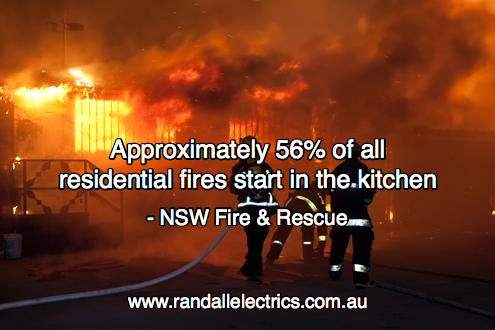Some say June/July is the busiest time of the year! With the rush of the end of financial year and the mid-year school holidays, you might’ve found yourself a little “too busy” to check your electrical appliances are in order, right? And now it’s August already (can you believe it!?) and the temperature is dropping (and finally there’s snow on the ground for all you skiers).

- Heaters
Data from all Australian Fire Services shows that the increased risk of house fires during winter is often due to higher usage rates of electrical appliances. And, as you might have guessed, heaters are one of the greatest users of electricity during winter. There are a number of ways to ensure your heater is safe for use:
- Prior to use, consult the manufacturer’s instructions for service and maintenance tips.
- Check that power cords and plugs are in good working condition (i.e. cords aren’t frayed).
- Vacuum any heater filters to remove any dust build-up before use.
- Avoid plugging into a powerboard, double adaptor or extension cord as this may overload and cause a fire.
- Don’t leave your heater unattended, particularly in high traffic areas, walkways or in the presence of children.
- Ensure a 1m distance to wet clothing or potentially flammable material.
- If gas is your preferred heating fuel, purchase a flued heater to avoid the air pollutants produced by unflued gas heaters.
- Smoke alarms
Are your smoke alarms in good functioning order or are they merely ceiling decorations? It’s important to make sure that you have an adequate number of smoke alarms throughout your home and that they are in good working order to keep your family safe. Testing is as simple as pushing the test button to make sure it beeps.
Changing the battery at least once a year is a good place to start. Not sure when the last time you changed the batter was? Try this – change your clock, change your battery! At the end of daylight savings (March), change your smoke alarm batter when you change your clock, that way you know you are entering the winter months with a working smoke alarm!
But if you haven’t done it yet, do it now.
- Test your safety switches
Your safety switch is a safety device that can switch off the electricity in a circuit – in the case of a fault – in as little as 0.3 seconds. To understand the difference between safety switches, circuit breakers and surge diverters (and why you need all three in your home), you might like to read a recent blog on safety switches.
It’s important to test your safety switch regularly to ensure it is working properly. You can locate your safety switch in your switchboard (it will look like a circuit breaker, but will have a ‘test’ button on the front). You may find multiple safety switches in your switchboard and it’s important to test them all.
To test, simply press the ‘test’ or ‘T’ button and power should switch off immediately. To return power to your home, flick the switch back to the ‘on’ position. If you’re switch doesn’t change to the off position after pressing the ‘test’ button, call your electrician to have it checked further!
- Fire place
Nothing beats curling up in front of the open fire in winter with a good book and a cup of tea, right? But, in order to do so safely, there are a number of checks to do prior.
Firstly, make sure the chimney is clean and any matches or lighters are stored in a safe place, away from children. Secondly, maintain a safe distance from your fireplace (at least one metre) and never leave it unattended – if you have children or pets in your home, why not set up a safety perimeter by placing a screen in front of it when in use. And finally, remember to extinguish any open flames or fires before going to bed, so you can sleep safe and sound!
- Kitchen appliances
Who doesn’t love a slow cooked meal in winter? Nobody. Of course, leaving hot electrical appliances unattended, especially if you’re out for the day, is a major fire risk. So, it’s important to keep an eye on your cooking and remember to check kitchen appliances for frayed or damaged cords and plugs before use.
Also, turning cooking appliances (and any electrical appliances, for that matter) off after use can not only prevent electrical hazards and keep you safe, but you can save money on your energy bills too!
While conducting these checks yourself is a great place to start, calling in a professional for a comprehensive check of your home can be the best way to ensure your safety in winter and provide you, and your family, peace of mind.
Of course, if you’d like help installing or testing & tagging electrical items in your home, we’d love to help. You can give us a call on 1300 045 103 or drop us a note.